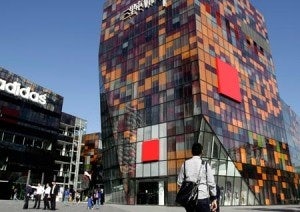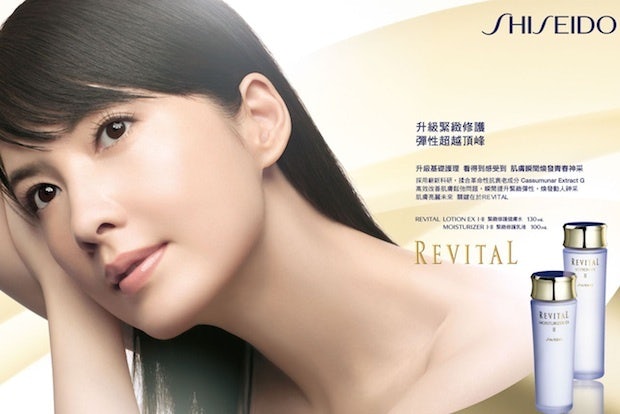Logo-Free Japanese Brands Remain Popular Despite Island Disputes#

In the heat of recent Japan-China disputes over the Senkaku/Diaoyu Islands, the media has been thrown into somewhat of a frenzy, buzzing with rather pessimistic speculations concerning the effects the territorial row will have on the two countries’ economies. While news feeds have largely been populated with reports of mass-market, hard-industrial companies like Panasonic and Fast Retailing Co.’s Uniqlo closing shop in the face of angry protests, stories about the dispute’s effect on the luxury sector in the world’s second- and third-largest economies, China and Japan, remain fewer and farther between.
Certainly, photos of boarded-up windows and covered-up logos are cause for alarm, but activities pertaining to Japanese companies like Sony, Nissan, Sharp, Aeon and Uniqlo are very different from, and should be analyzed independent of, Japanese luxury brands. The difference first lies in the visibility of mass-market brands in the tech, auto, and fast-fashion industries versus popular luxury brands that largely reside in the beauty market -- among them
Shiseido#
(whose China sales reached US$1.1 billion last year),
Shu Uemura#
and
SK-II#
.
While wildly popular, especially among China’s increasingly independent and lucrative young female demographic, such cosmetic brands largely fly under the radar, both in terms of commercial presence and wearability -- particularly when compared to logo-heavy European luxury brands. That is to say, if Chinese protesters are targeting highly visible companies, as they are commercial symbols of Japan, luxury cosmetic brands like Shiseido need not fear a sudden shift in consumption. For one thing, such luxury cosmetic skincare sectors tend to garner strong brand loyalty, especially when domestic Chinese brands -- which are, admittedly, moving up the value chain -- still can't really compete in the ultra-premium segment. Even if Chinese shoppers do cut back on buying Japanese products at local malls, they may do as they did back in 2010 and just purchase more on trips to South Korea or Hong Kong.
This is not to say that high-end consumers (contra the more violent protesters seen on the streets of Xi'an or Shanghai last week) are insensitive to the recent political climate, no doubt they are. However, to assume that they will boycott Japanese brands wholesale as a result of this recent spat is to conflate two very different issues: political sentiment and buying behavior. Throw in the low visibility factor of these Japanese luxury brands -- when worn, lipstick and perfume are logo-free, after all -- and no real incentive remains for abandoning high quality products and completely changing consumer psychology. As ABS/CBN News mentioned earlier this week, even Chinese shoppers who may purchase Dior cosmetics instead of SK-II amid the recent boycott calls are still generally buying from Japanese retailers. Said one shopper surnamed Liu, "I don't like Japan but as the Western saying goes, 'politics is politics and economics is economics.' I care more about the quality of the things I buy."

Even at the middle-market level, neither China nor Japan can truly afford to be business enemies. China is Japan's largest trading partner, with bilateral trade in 2011 growing 14.3 percent to a record US$345 billion, and both countries are seeking to increase trade with each other as demand from the United States and Europe continues to weaken. What's more, Japan relies heavily on China’s rare earth resources -- a fact made very clear in the wake of the two countries' last Diaoyu/Senkaku spat in 2010. As Graham Bibby, CEO of Richmond Asset Management in Hong Kong told CNBC, "I just look at the economics behind it and a lot of the manufacturing from Japan relies on rare earths, and most of the rare earths they get are from China. And the last time this sort of squabble came up, China said no more rare earths, so no more Toyotas and no more smartphones. So at the end of the day, they've got the upper hand." But at the same time, the rare earths these Japanese auto or electronics companies are looking to buy from China are going into products ultimately manufactured in factories within China that employ thousands of Chinese workers.
For the time being, it may be wise for highly visible, mass-market Japanese brands to keep a low profile -- as many are. However, precautionary measures, such as closing shop, are not a reflection of a downhill trajectory for Japanese companies over the long term, especially if we're talking about luxury cosmetic items that remain popular among Chinese consumers. As the Australian noted:
[The recent protests] may turn out to be shortlived: nasty, but just a version of the same trouble that Japanese companies in China have weathered in the past. Japanese businesses are as capable as anyone else of running the maths of the past few days. At their peak, the anti-Japan rallies over the weekend attracted 80,000 to 100,000 people nationwide. They were noisy, but represented 0.006 per cent of the overall Chinese population. The remaining 99.994 per cent may feel conflicted about giving up Shiseido shampoo and the lithium batteries in their phones.
As we approach Beijing's upcoming leadership transition and next year's election in Japan, any political upheaval should continue to be taken with a grain of salt, despite the ongoing brinkmanship and regional tension. This is all to say, this dispute’s bark -- as unnerving as it is -- may be worse than its bite, at least for Asia’s luxury sector.
